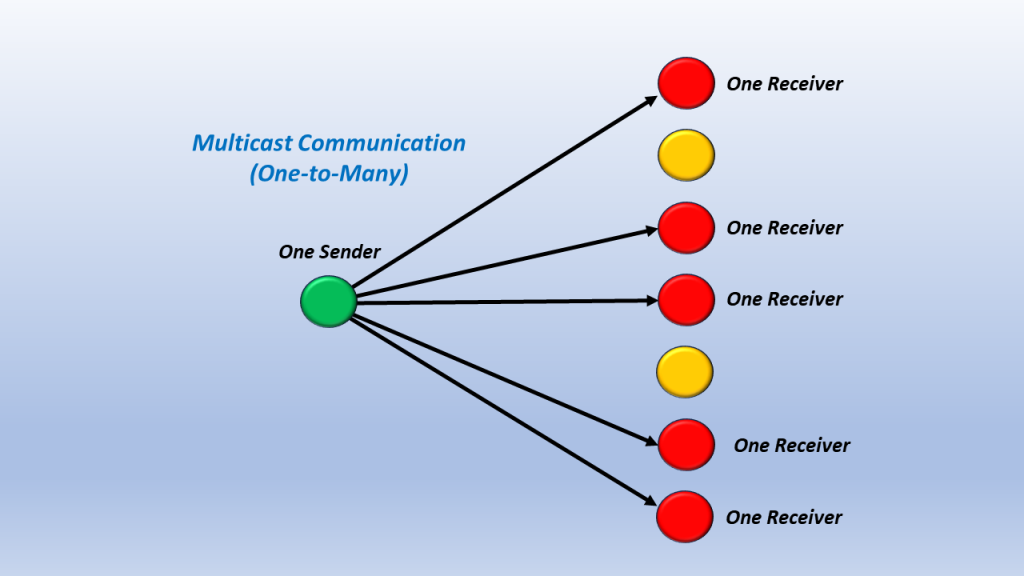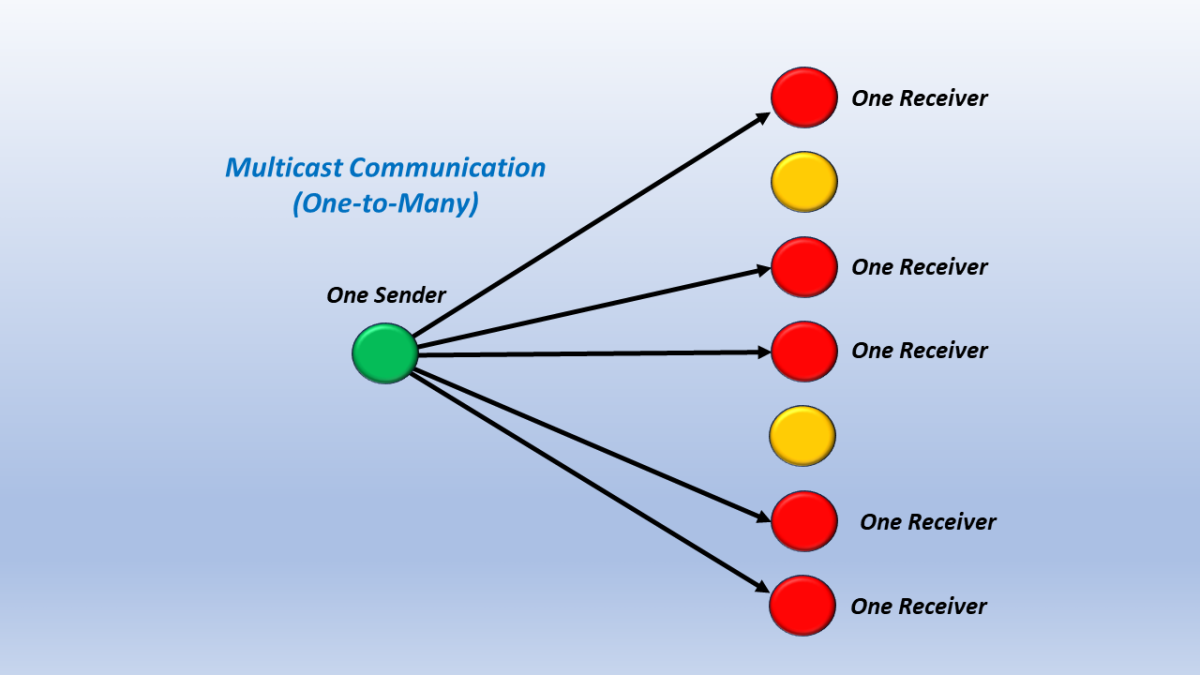In Computer Network Architecture, the three types of communication are:
These forms of communication can occur in Layer 2 (the Data Link Layer) and Layer 3 (the Network Layer).
NOTE: Layer 2 is the Data Link Layer. At this layer, the switch device works using MAC addresses for communication. Layer 3 is the Network Layer, where the router device uses the IP addresses for communication.
In this case, “cast” refers to how many people or devices we send data to. As mentioned above, we can send data in a unicast, multicast, or broadcast manner.
I will briefly define these terms below.
Unicast Communication
Unicast: Means one-to-one communication. In this case, a single sender sends data to a single receiver or device.
I show a simple illustration of Unicast Communication below in Figure 1.

Figure 1, Illustration of Unicast Communication.
Multicast Communication
Multicast: This means one-to-many communication. In this case, a single sender sends data to multiple devices in parallel.
However, Multicast communication does not involve ALL DEVICES. Some devices on the network are excluded from this communication. This makes Multicast Communication different from Broadcast Communication.
I show a simple illustration of Multicast Communication below in Figure 2.

Figure 2, Illustration of Multicast Communication.
Broadcast Communication
Broadcast: Means one-to-all communication. In this case, a single sender sends data to ALL network devices.
Broadcast is different from Multicast Communication in that (for Broadcast) the sender sends information to ALL devices and excludes no one.
I show a simple illustration of Broadcast Communication below in Figure 3.

Figure 3, Illustration of Broadcast Communication.
What is Multicast Communication?
Multicast is a type of data transmission where data is sent from one device to a group of devices on a network.
It is a type of one-to-many communication where a single packet of data is transmitted to multiple recipients simultaneously.
In a Multicast transmission, a single packet is addressed to a group of devices rather than to a single device like in Unicast. The packet is then replicated and sent to all devices in the group, allowing for more efficient network resource use.
Every packet is addressed to a multicast group address in a Multicast transmission. This means that only devices that have subscribed to the multicast group will receive the packet.
This characteristic (of communicating with many, but NOT ALL, receivers) makes multicast communication different from broadcast communication (in which a single device sends packets to ALL devices within the network).
Multicast transmission is widely used in applications such as video streaming, online gaming, and real-time communication, where the same data must be sent to multiple recipients simultaneously. For example, a video streaming application sends a video stream to a group of users watching the same video.
Examples of Applications using Multicast Communication
- PPV Services for Events such as boxing matches or World Cup (Soccer Matches).
- Streaming Services, such as Netflix, Sling, Hulu, Amazon Prime Video, and Disney+.
I show a simple illustration of Multicast Communication to realize a Live-Streaming Service below in Figure 4.

Figure 4, Illustration of Multicast Communication to realize a Live-Streaming Service.
Multicast Communication within Ethernet
I discuss how we support Multicast Communication within the Destination Address of an Ethernet frame, in another blog post.

